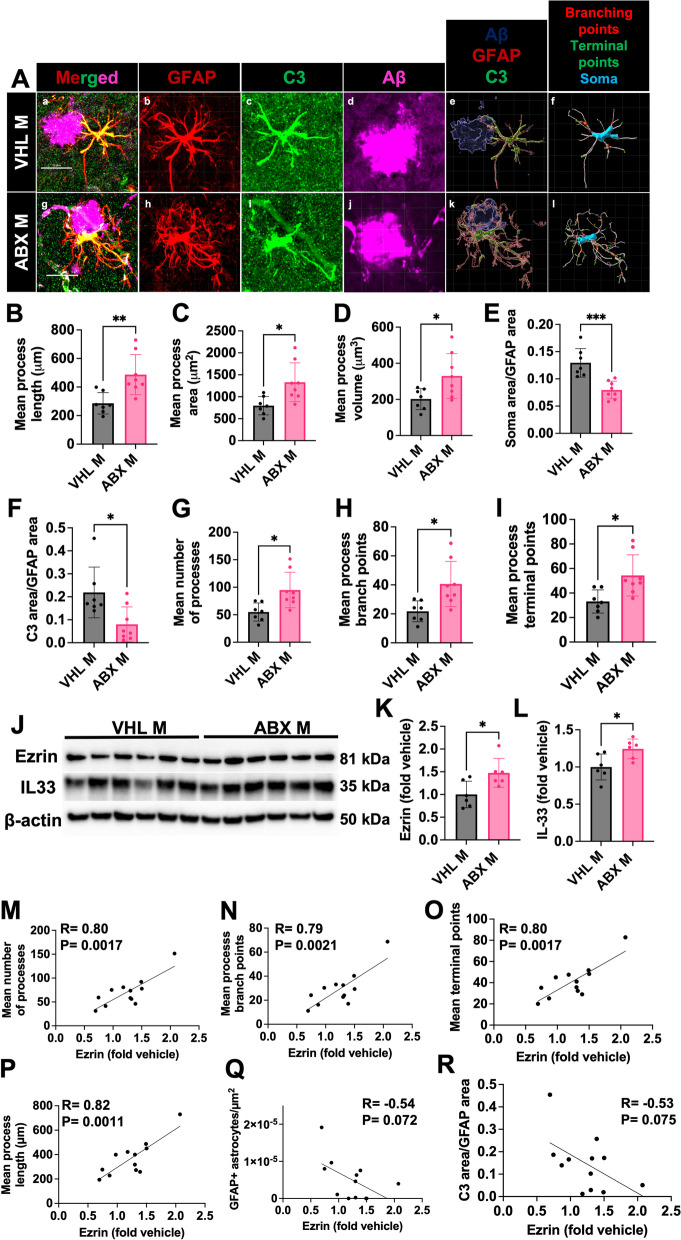Fig. 2.
Administration of short-term antibiotics alters astrocyte morphology and C3 + astrocyte reactivity in the brain of male APPPS1-21 mice. (A) Representative GFAP, C3, and Aβ merged astrocyte z-stack maximum projections (a, g), IMARIS 3D reconstructions (e, k), and IMARIS filament 3D reconstructions (f, l) for VHL male (a-f) and ABX male (g-l) groups. GFAP (b, h), C3 (c, i), and Aβ (d, j) shown as separate channels from merged images. (B) Quantification and comparison of astrocyte mean process length sum (µm). (C) Astrocyte mean process area sum (µm2). (D) Astrocyte mean process volume sum (µm3). (E) Astrocyte soma area/GFAP area. (F) Astrocyte C3 area/GFAP area. (G) Astrocyte mean number of processes. (H) Astrocyte mean number of process branch points. (I) Astrocyte mean number of process terminal points between VHL male and ABX male groups. (J) Immunoblots for ezrin, IL33, and β-actin in ABX and VHL treated male mice. Quantifications of for ezrin (K) and IL33 (L) immunoblots normalized to β-actin in ABX and VHL treated male mice. Correlations between Ezrin protein levels and mean number of astrocyte processes (M), branch points (N), terminal points (O), process length sums (P), GFAP + astrocytes (Q), and C3/GFAP levels (R). M = male. Data expressed as mean ± standard deviation. N = 6–7/group. Statistics calculated using two-tailed unpaired student’s t-tests. 4 sections used per animal. * denotes a p-value ≤ 0.05, ** indicates p-value ≤ 0.01, *** indicates p-value ≤ 0.001, and **** indicates a p-value of ≤ 0.0001. Scale bars indicate 20 µm

